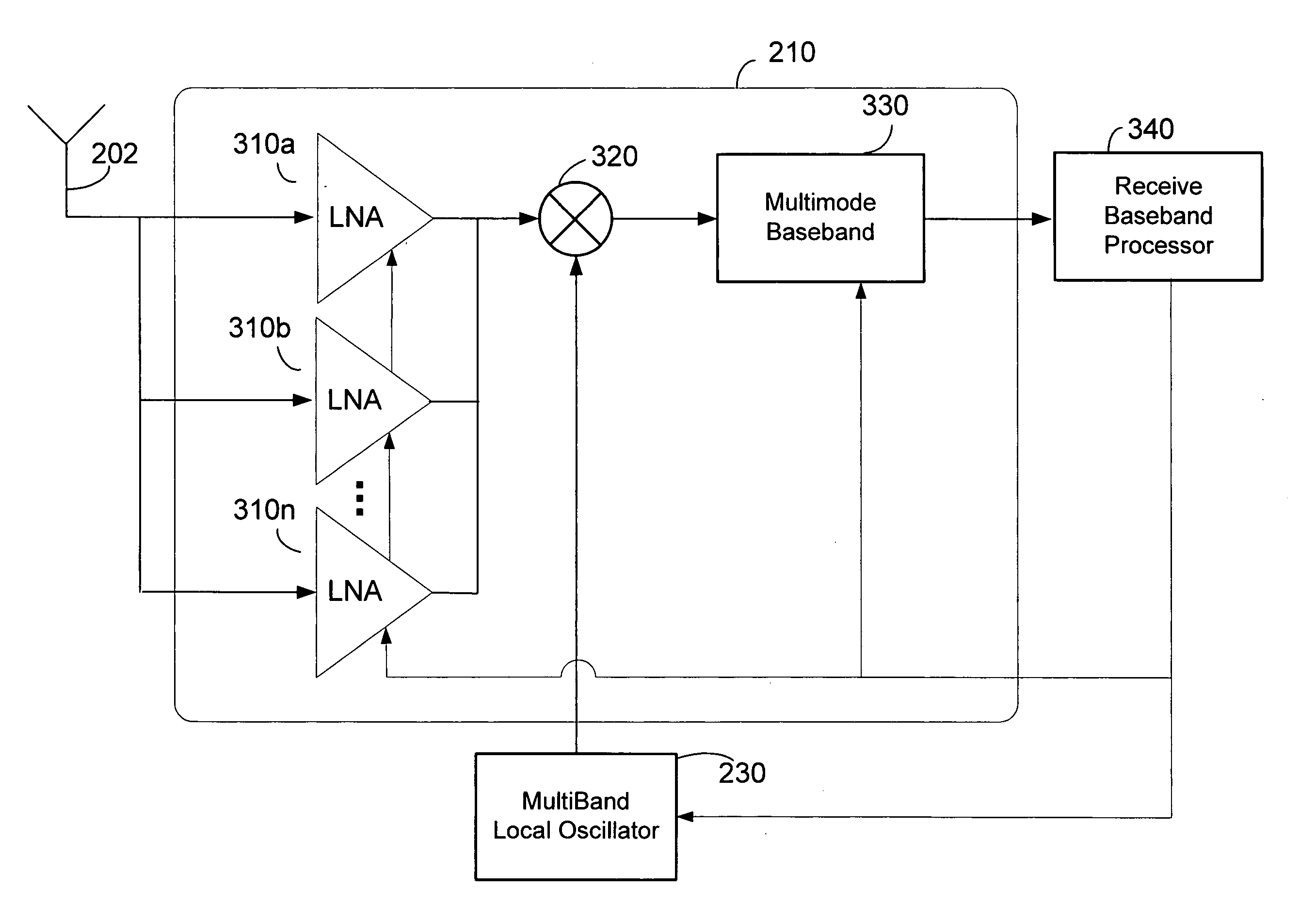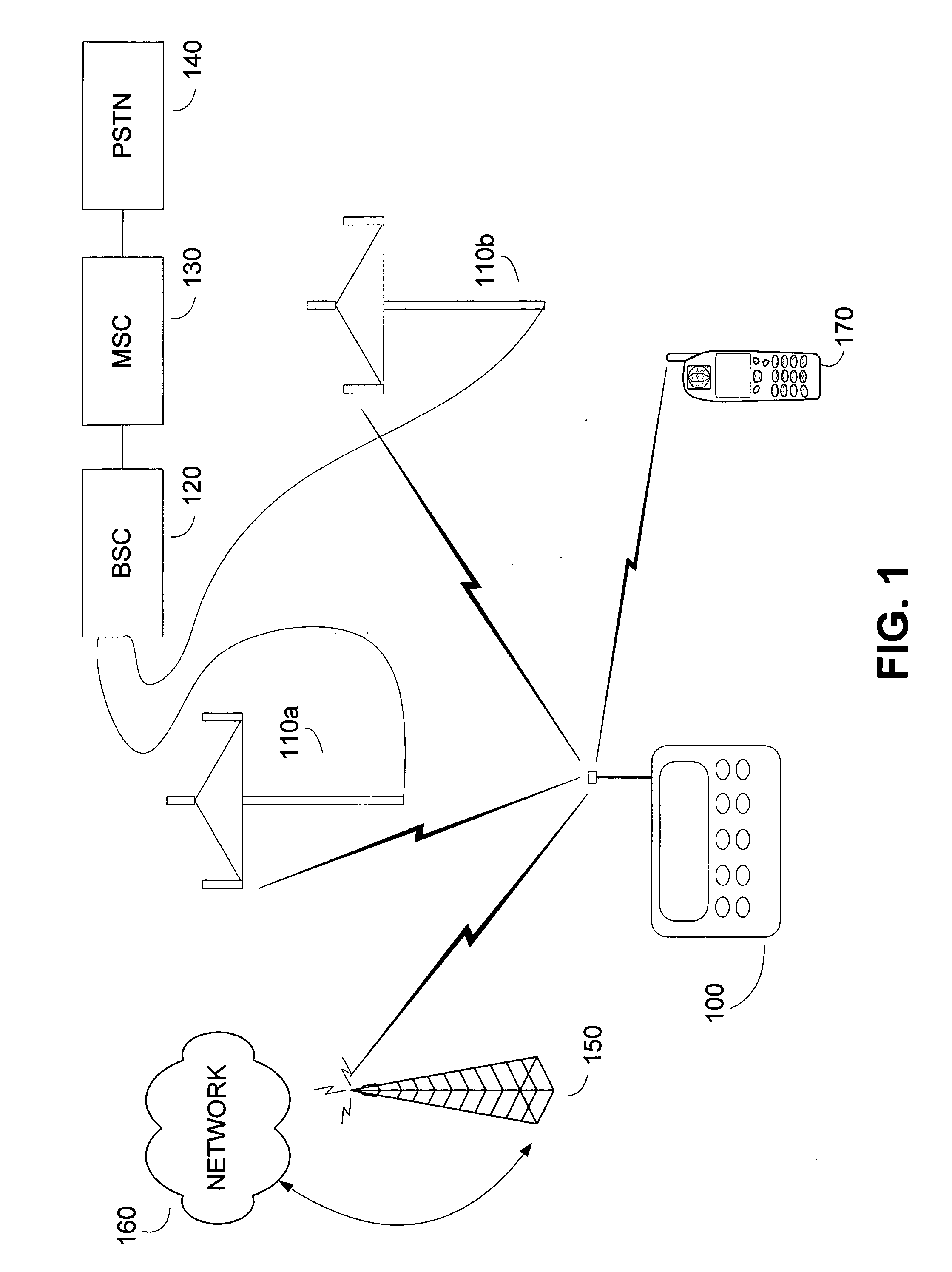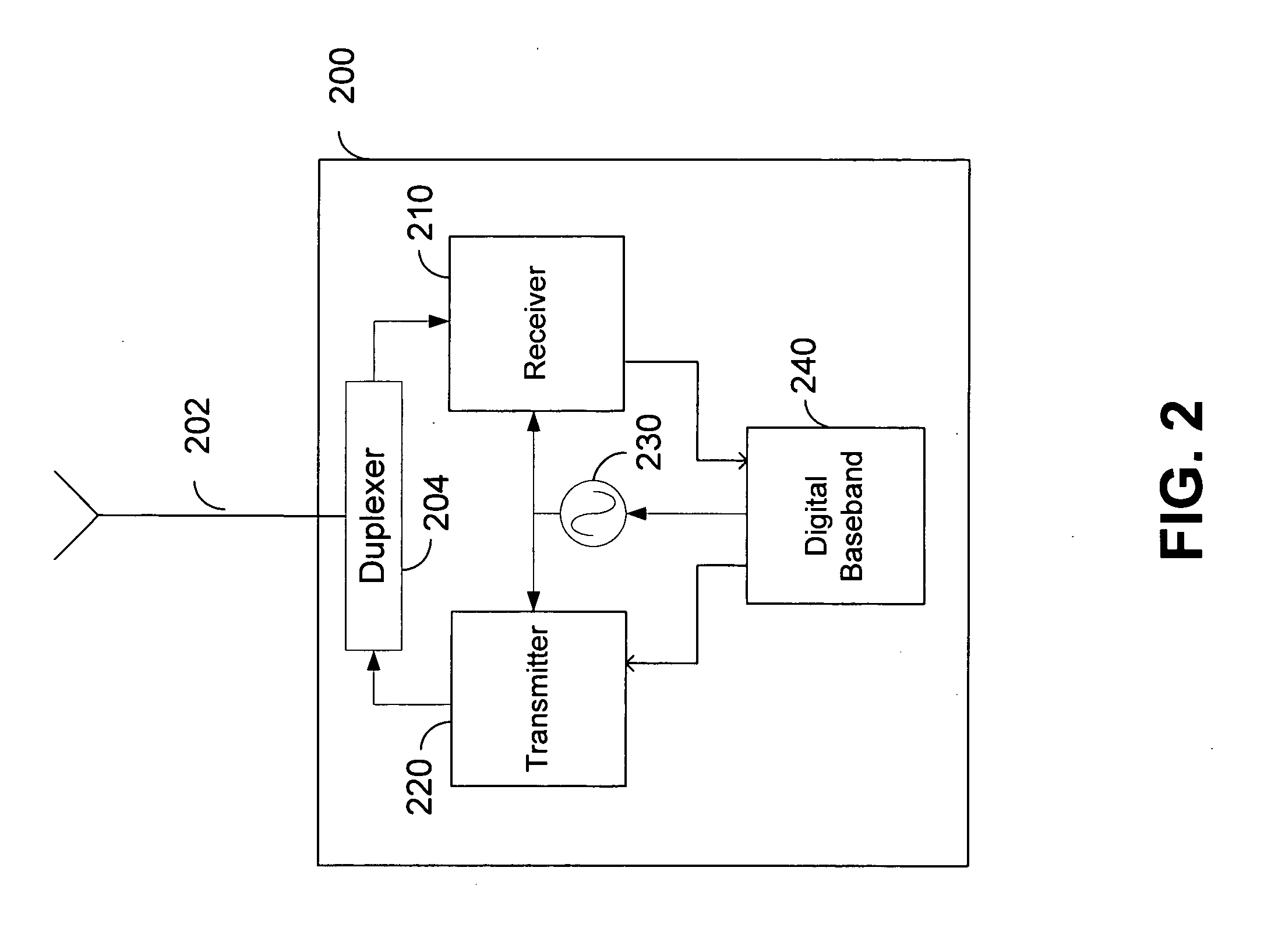Transmitter and receiver architecture for multi-mode wireless device
a multi-mode wireless and transmitter technology, applied in the field of radio transceivers, can solve the problems of reducing compromising the efforts to shrink the physical size of the device, and introducing elements to the device is contrary
- Summary
- Abstract
- Description
- Claims
- Application Information
AI Technical Summary
Benefits of technology
Problems solved by technology
Method used
Image
Examples
Embodiment Construction
[0023] A multi-mode wireless device includes a multi-mode antenna, transmitter, receiver and corresponding baseband portions. Each of the elements in the multi-mode wireless device can used resources that are shared for multiple operating modes. The use of shared resources allows the device elements to be more efficiently designed and reduces the packaging requirements for supporting multiple modes.
[0024] The receiver can include multiple LNAs coupled in parallel, with each LNA supporting the operating band of one or more wireless communication standards. Typically, a single LNA does not have sufficient performance to support signals in all of the operating bands corresponding to the supported communication standards. Each of the LNAs can be configured to selectively amplify the received signal, based on the operating mode of the multi-mode wireless device.
[0025] The output of the LNAs can be coupled to a frequency conversion stage, where the received signals can be downconverted ...
PUM
 Login to View More
Login to View More Abstract
Description
Claims
Application Information
 Login to View More
Login to View More - R&D
- Intellectual Property
- Life Sciences
- Materials
- Tech Scout
- Unparalleled Data Quality
- Higher Quality Content
- 60% Fewer Hallucinations
Browse by: Latest US Patents, China's latest patents, Technical Efficacy Thesaurus, Application Domain, Technology Topic, Popular Technical Reports.
© 2025 PatSnap. All rights reserved.Legal|Privacy policy|Modern Slavery Act Transparency Statement|Sitemap|About US| Contact US: help@patsnap.com



